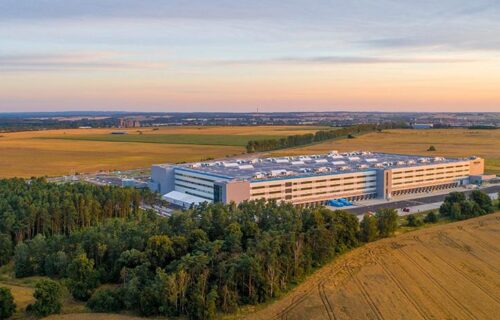Companies operating in logistics facilities without green certificates may have problems surviving until Black Friday
• In Poland, the number of properties with environmental certificates is systematically growing – currently there are over 1,600 of them.
• 30 percent of all certifications takes place in logistics – but in this group it is still only 40 percent. total, modern warehouse space.
• Measurement solutions used in preparation for certification allow you to save up to 30%. media consumption. On the eve of the energy crisis, this is of particular importance for companies, e.g. from the e-commerce industry.
According to the data of the Polish Ecological Building Association (PLGBC), 45 percent are located in Poland. all certified buildings in the CEE region. The logistics industry is recording a successive growth, which in terms of such space is second only to the office real estate sector. Unfortunately, nearly 60 percent. of modern warehouse space still does not have an environmental certificate. For their owners and tenants, it is associated with image and economic losses. It also usually means higher operating costs, including utility costs. This state of affairs, together with the approaching energy crisis, means that many companies, e.g. from the e-commerce industry, may have problems with the functioning and efficient execution of orders during the autumn purchasing summit.
More and more green certificates, but most halls still do not have them
The PLGBC study “Sustainable Certified Buildings – Report 2022” indicates that in Poland the number of facilities with environmental certificates is systematically growing. Only in the period March 2021-March 2022 the number of such properties increased by 24%. The largest increase is recorded in logistics, which has already reached nearly 30 percent. industry share in the market, second only to office properties (47.5%). In the analyzed period, the environmental certificate was obtained by another 171 warehouse facilities, which means an increase by 4 million m2 of space y / y. As a result, the share of certified space in relation to the total modern warehouse space in the country is at the level of 41%. The remaining 59 percent. relatively new halls and warehouses do not have a system that confirms compliance with environmental requirements. However, these properties can also be certified during the use phase. And this not only pays off, but in many cases is also a necessity.
The law does not require, but an accountant does
According to PLGBC, 90 percent. among the certified warehouse and industrial facilities in Poland, it meets the requirements of the British BREEAM standard, the remaining part is based on the American LEED system (7%) and the German DGNB (3%). The certificate confirms, above all, that the property is environmentally neutral, energy-efficient and provides optimal conditions for its users and stakeholders. Such status requires the application of, inter alia, ecological and energy-saving materials and equipping the facility with systems that optimize media consumption, air purification, or responsible waste management. An important criterion is also the location of the property in the vicinity of the communication infrastructure. Documented compliance with environmental requirements translates mainly into economic benefits.
“Although the provisions of the construction law do not impose the need to have environmental certificates, for many years they have been the norm and good practice for newly constructed halls or warehouses. At the same time, they constitute a competitive advantage that allows attracting “large” tenants and offering space at a higher rental rate than would be the case for facilities without certified pro-ecological solutions. It is also important that the possession of an environmental document for the facility, and thus the appropriate technology used in it, increases the value of the property. This is particularly important in the event of its possible subsequent resale,” explains Mateusz Saletra from SPIE Building Solutions.
Black Friday is not for everyone?
An important element of the pro-environmental orientation of a logistics facility is modern technology, which allows for precise metering and monitoring of media consumption. This not only takes care of natural resources, but allows, above all, to optimize consumption, which in turn translates into cost rationalization. Importantly, the implementation of measurement solutions is a minimally invasive activity that can adapt to the already existing infrastructure. It is of particular importance right now, in the context of the drastically rising prices of utilities and the uncertainty of their deliveries in the autumn and winter period, which may constitute “to be or not to be” for many companies in the industry, such as the e-commerce sector.
“For several months, we have been observing a growing number of inquiries from logistics operators and warehouse tenants for tools to automate business processes and optimize operating costs. They result not only from the facility certification plans, but are also dictated by the desire to achieve savings in the face of the current situation on the raw materials market. The main interest is in technologies enabling data monitoring and remote reading of media consumption, which ensure their timeliness, the possibility of analysis and ongoing correction, and notification of over-normative events. The implementation of such solutions is not time-consuming and costly, but allows for quick improvements and elimination of losses. At the same time, our calculations show that the savings resulting from the implementation of measurement technology can reach up to 30%. annual consumption. This applies to both gas, water and electricity,” sums up Mateusz Saletra from SPIE Building Solutions.
Author: SPIE Building Solutions
Photo: Panattoni – BREEAM ‘Excellent’ BTS Świebodzin
